Keyword search volume is a valuable metric in search engine optimization (SEO). It refers to the number of times a specific keyword is searched for in a specific time frame.
Whether you’re building a new website, crafting a pay-per-click (PPC) marketing campaign for your Google AdWords account, or doing keyword research to draw more organic traffic to your existing website in the hopes of acquiring new customers, you should consider keyword search volume.
The below guide provides more detailed insights into what keyword search volume is and how you can use it to improve your SEO efforts.
What Is Keyword Search Volume?
Keyword search volume reveals how many times a certain keyword is searched for within a defined time frame.
Professional SEO marketers will look at keyword search volume averages over predefined periods to determine just how popular—and competitive—a keyword is. This information then guides their strategy regarding what keywords are most likely to garner interest and drive traffic.
Studies show that 93% of online journeys begin with a search engine. From there, who’s to say where their search queries make take them? However, for marketing professionals, having a well-devised search engine marketing strategy can help guide users in the right direction.
How Do Keywords Work?
Keywords help Googlebot and other search engine crawlers determine what a webpage is about.
The bots can then correctly index the page in the search engine database. So when a user types in a keyword, the search engine includes the webpage in the user’s search engine results pages (SERPs).
Incorporating relevant keywords are a critical element of on-page SEO.
However, keep in mind that you can't just add a few keywords onto a page and expect it to rank—you need to provide high-quality useful content about your chosen keywords.
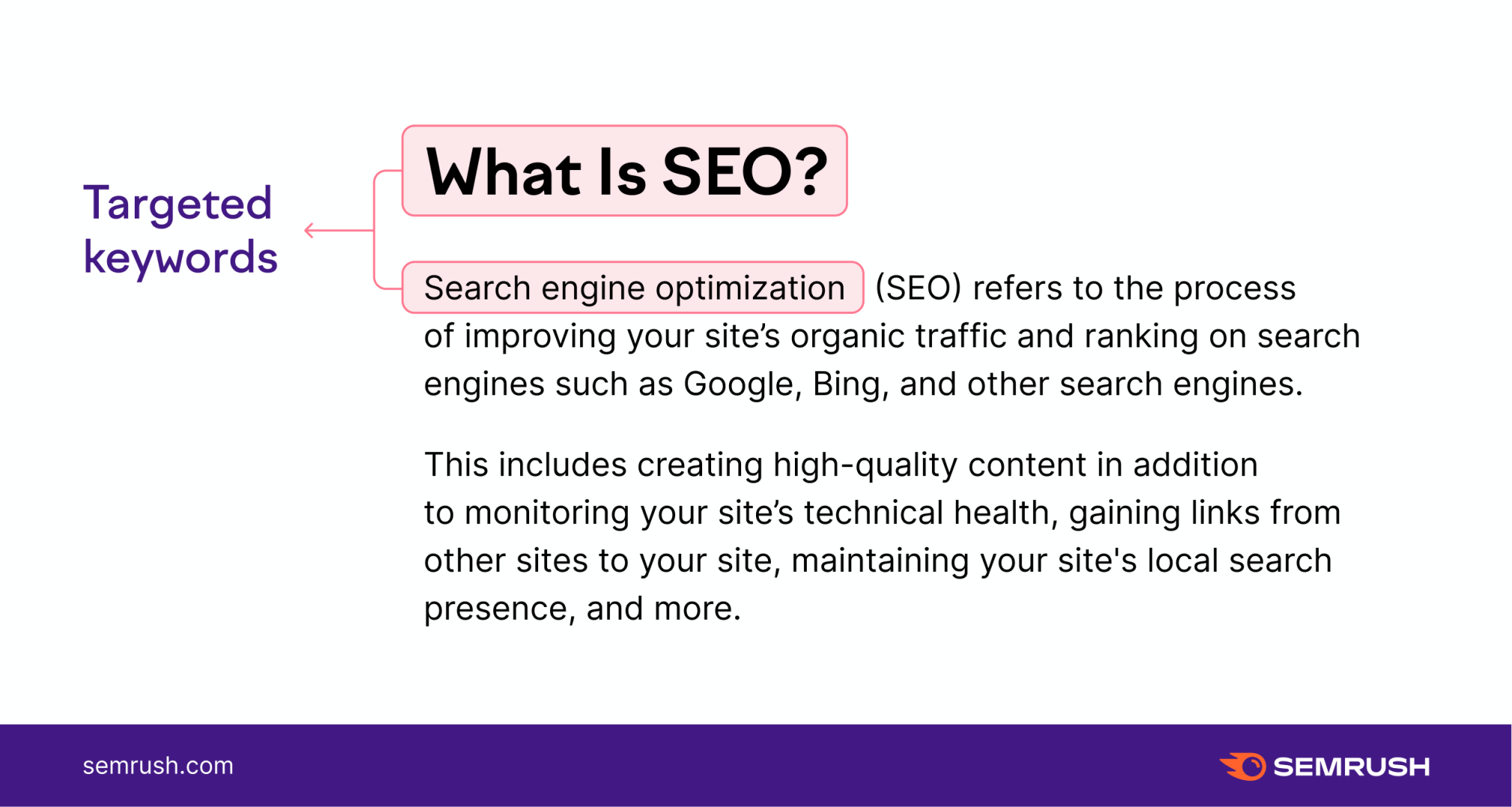
What Is a Good Keyword Search Volume?
As with all things SEO, it depends.
The simplest answer is to aim for a minimum volume of 100–1,000 searches per month. However, we’ll go over some factors below to help you determine if a keyword is a good choice for you.
“Good” is a relative term, but we can say it’s all about striking a delicate balance.
Here are factors that will impact what keywords you should choose:
Keyword search volume may vary depending on the industry You want a high-enough volume without overly competitive rates Using rarely searched keywords means people may not find your content Using keywords with an extremely high search volume means you could be stuck competing with larger sites The size of your site and your budget should factor into your research If you’re running a corporate website with a large budget, you may be willing to spend more on highly competitive keywords to maintain your competitive edgeWhen it comes to good keyword search volume, you’ll want a healthy balance of low-volume and medium-volume keywords. This can allow you to compete in SERPs using a more focused topic while competing with moderately competitive keywords.
For instance, you can target keywords or phrases with a search volume of 100–1,000 and keywords with a medium volume like 10,000–100,000. It also depends on the industry and the level of competition calculated for each keyword.
Unless you generate a lot of traffic to your site—thousands or millions of visitors a month—it may not be in the best interest to go after keywords with search volumes of 100,000 to 1 million.
Seasonal and Evergreen Keywords
Keyword search volume may be steady or seasonal.
Evergreen keywords are searched for consistently, regardless of the period. For example, people may search “how do I change my oil” or “how much does a hair cut cost” regardless of what month it is.
On the other hand, seasonal keywords are time-sensitive. For example, people are more likely to Google “holiday gift ideas” in the run-up to festivities like Christmas, Hanukkah, or Kwanza.
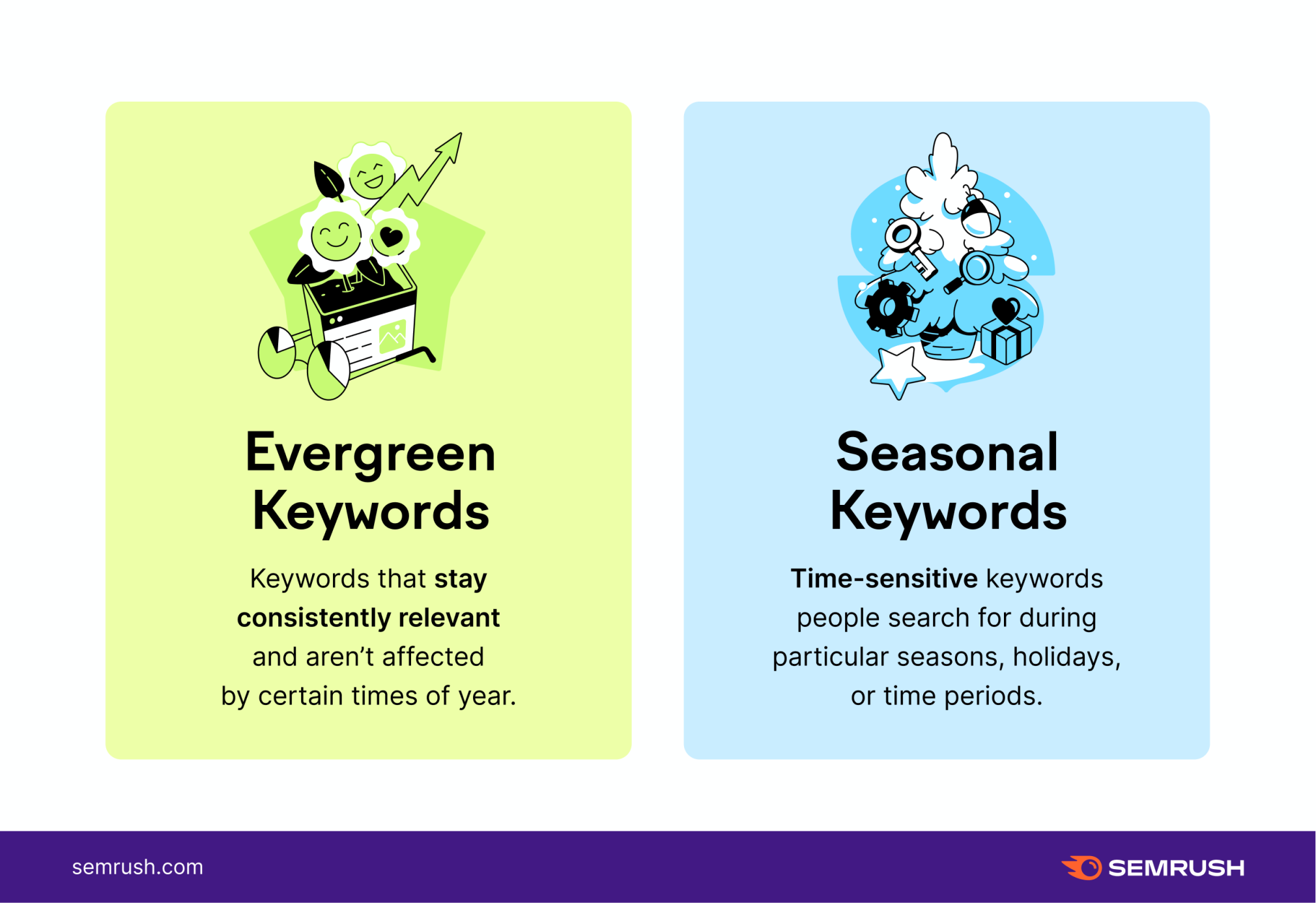
How to Find Monthly Search Volume for Keywords
You can sort your list of given keywords by various metrics, such as click rate and volume. To search by volume, click on “Volume.”
Semrush even has extra features that can be helpful, like the Keyword Overview tool. This provides additional data like localized versus global volume, keyword difficulty, and results on the SERP.
Here’s what you can expect to see when we observe a keyword like “vintage pinball:”
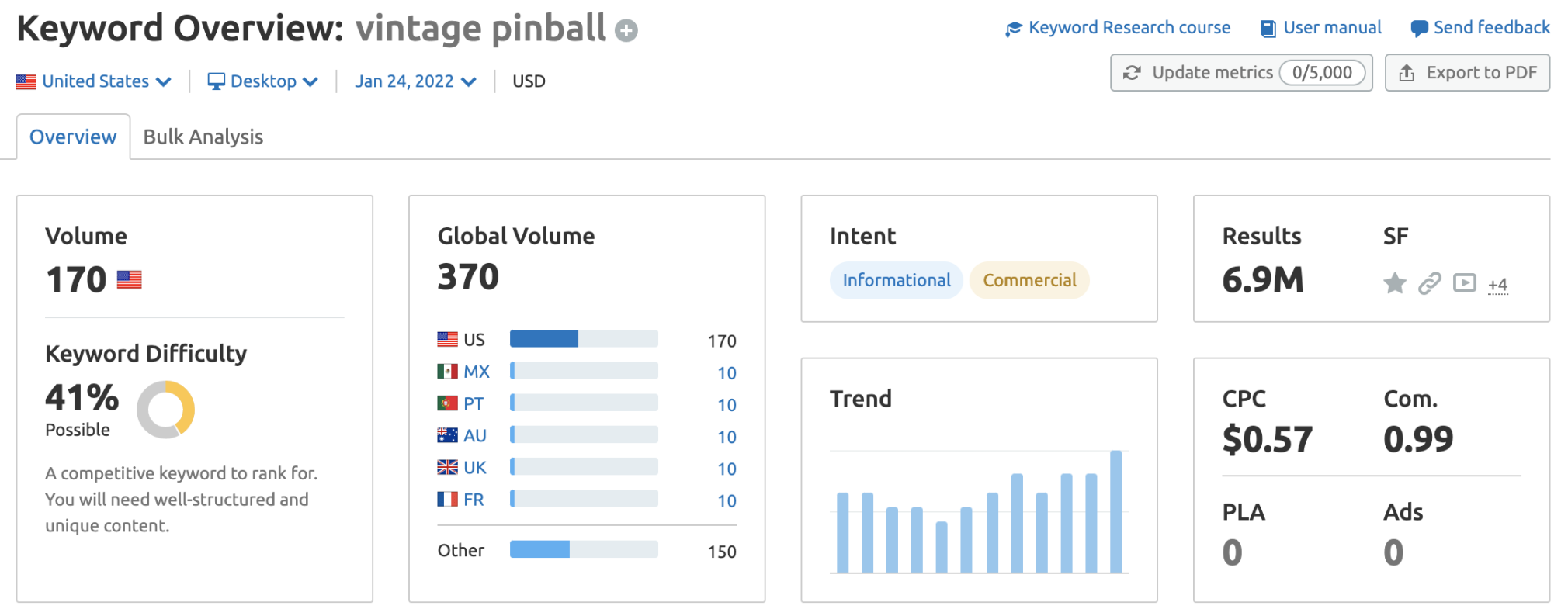
How Do You Find Keywords?
Algorithms may structure search engines, and bots may be the ones crawling websites to determine SERPs results—but ultimately, SEO is all about meeting the needs of human users.
When selecting effective keywords, it’s critical to consider the intent—also called keyword intent or search intent. What does a person hope to find when they input a specific set of words into a search engine?
Meeting user intent is critical to ranking well in the SERPs. Say you have a website dedicated to the best restaurants in Greensboro, North Carolina.
You would want to include localized SEO keywords that target users in this location. For example, those actively inputting search queries to find eateries in Greensboro will see their results, whereas people outside Greensboro won’t.
So, how do you find the right target keywords? It’s not a guessing game. As with most things in SEO, there are data-driven tools available to guide the process.
Here are some of the best keyword research tools that can help you find search terms, with a brief primer on how to use each one:
Semrush Keyword Magic Tool Google Trends Google Keyword Planner Google Search Console Keyword Sheeter Semrush Topic Research ToolSemrush Keyword Magic Tool
Our Keyword Magic Tool is a tool that operates on a “freemium” model, meaning you can access some parts of the tool for free but need to upgrade for full functionality.
According to our study ran in March 2022, Semrush has the most accurate search volume metric available on the market, so you know you're getting data you can trust.
You can use the Keyword Magic Tool to find and analyze keywords to drive successful SEO and PPC marketing campaigns and attract traffic to your business website.
To use the Keyword Magic Tool, first input a keyword. From there, the tool searches a database of more than 21 billion keywords. In addition, you’ll get information about keyword difficulty, competitive density, search volume, and search intent.
Say you own a website that sells vintage video games and pinball machines. You might check out the keyword “vintage pinball.”
Here are your results:
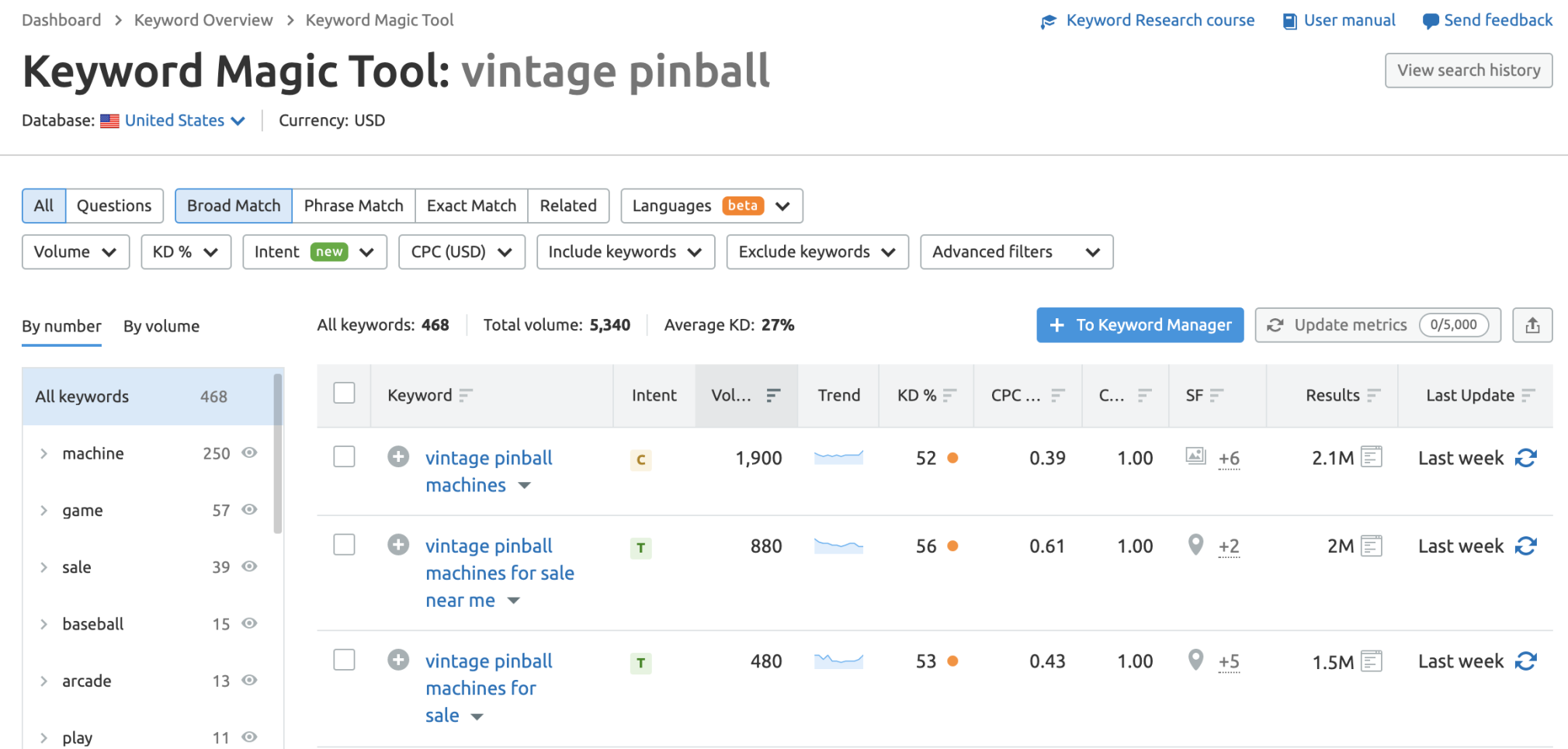
As you can see, you get a great deal of granular data, including:
Suggested keywords Search volume Search intent Trends KD percentage Cost-per-click (CPC) fees Competitive density SERPs Number of URLs displayed in organic search results for that keywordWe get into greater detail about using this information to find popular keywords and search for volume metrics below.
Semrush offers three price points to meet the needs of different businesses.
The Pro plan for freelancers and startups costs $119.95 per month. The Guru plan for small- to midsize enterprises costs $229.95 per month. The Business plan for larger companies costs $449.95 per month.You can pay on a monthly or annual basis. Annual billing will save you 16% compared to a monthly plan.
If you're unsure which type of account is best for you, you can get a 7-day free trial of a Pro or Guru subscription
Google Trends
Google Trends is a free tool that visually represents how popular a keyword is over time. All you have to do is visit the Google Trends portal, input the keyword you want to know about, and you’ll get a line chart showing search highs and lows.
Take the word “firework,” for example.
This chart reveals that searches for “firework” spike around the Fourth of July. There is also a slight increase in searches around New Year’s Eve.
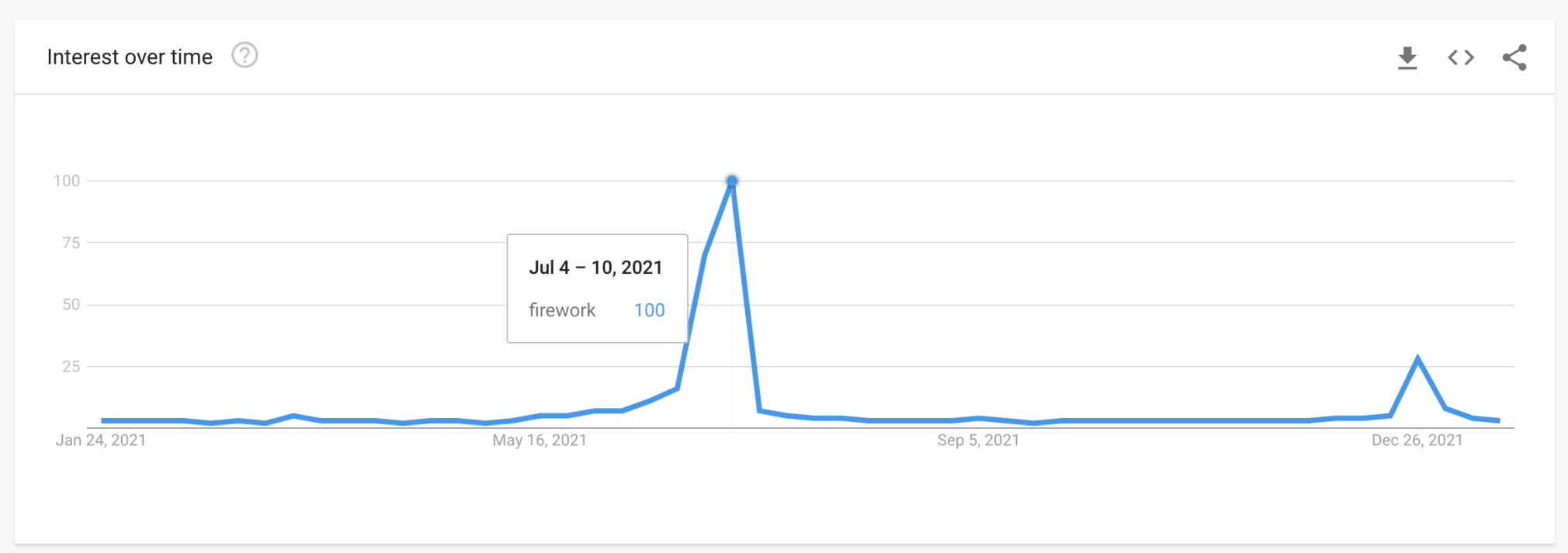
These are both holidays celebrated with fireworks, so you can see that this is a seasonal keyword. Scroll further down, and you can get geographic data on where the term is searched more frequently.
In this case, the geographic area has been set to “United States” at the top of the page, but you can also change it to “Worldwide” or designate other countries. You can also change the given period. In this case, the time window is set to 12 months.
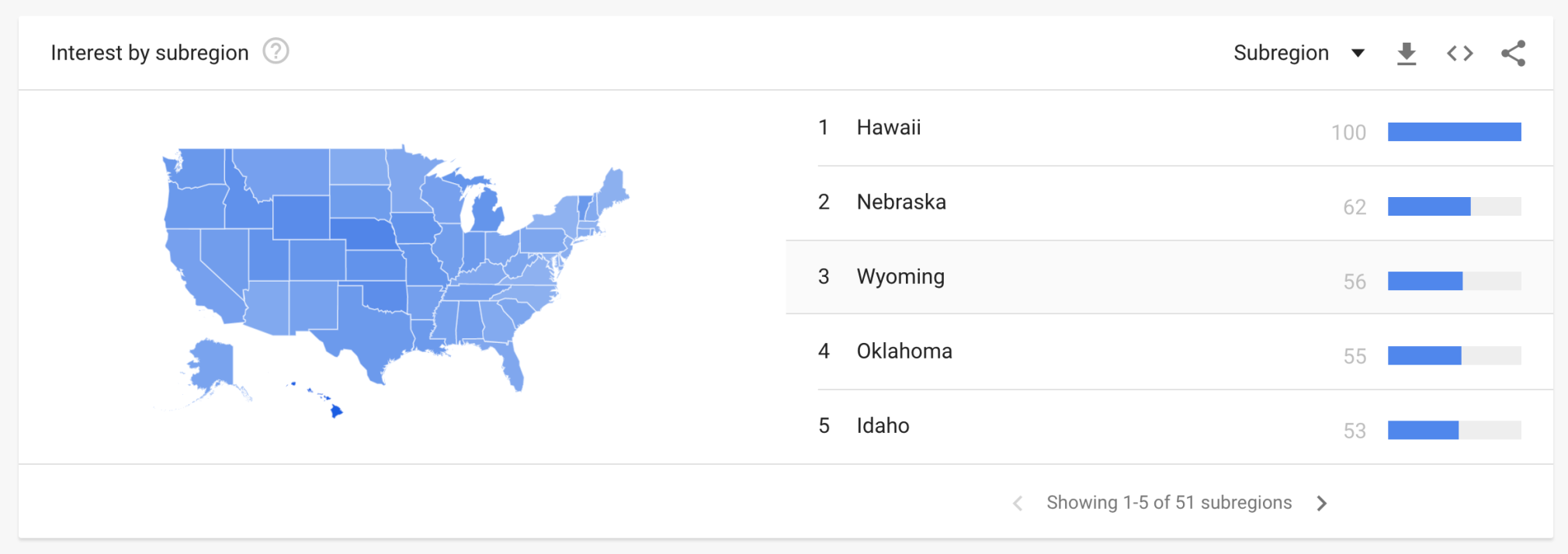
Scroll further, and you’ll get related topics and queries (e.g., “Fourth of July fireworks 2020”), which can help inform your chosen keywords.
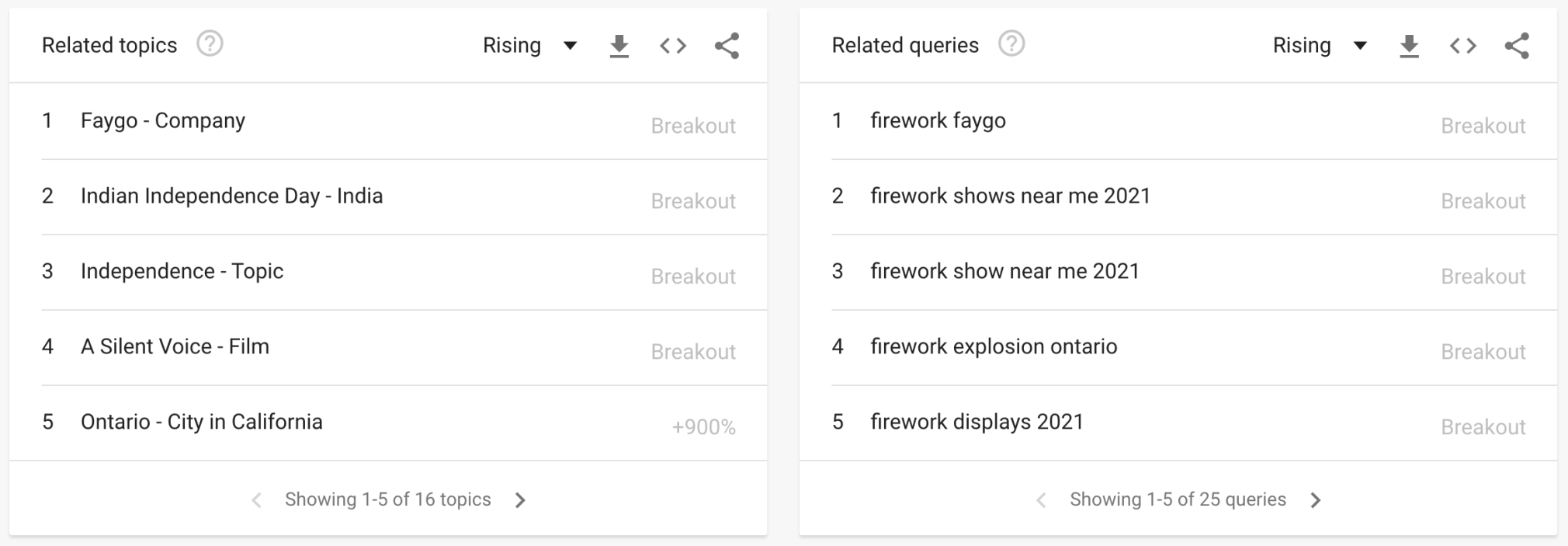
Check out our blog for more information about using Google Trends for keyword research.
Google Keyword Planner
Formerly known as Google Keyword Tool, Google Keyword Planner is another free tool from the search engine giant.
To access Keyword Planner:
Visit this page and click on “Go to Keyword Planner.” Once you set up, click on “Tools” in the menu bar Select “Switch to expert mode.” Then, you'll see a link to the Keyword Planner on the main menu page. There will be two options: “Discover new keywords” and “Get search volume and forecasts.”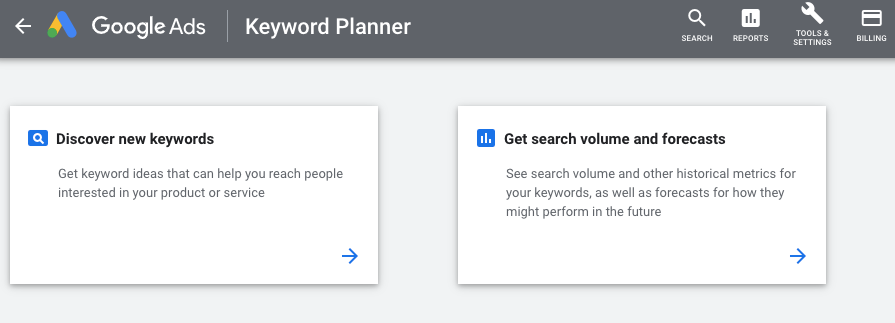
To find keywords, click “Discover new keywords.”
You can then enter specific keywords or even the URL of your website to determine what keywords fit.
So, if you input your business website, Google will provide keyword suggestions for suitable SEO keywords. Every suggestion provides average monthly searches (keyword search volume) and competition.
Here’s an example using the U.S. McDonald’s website:
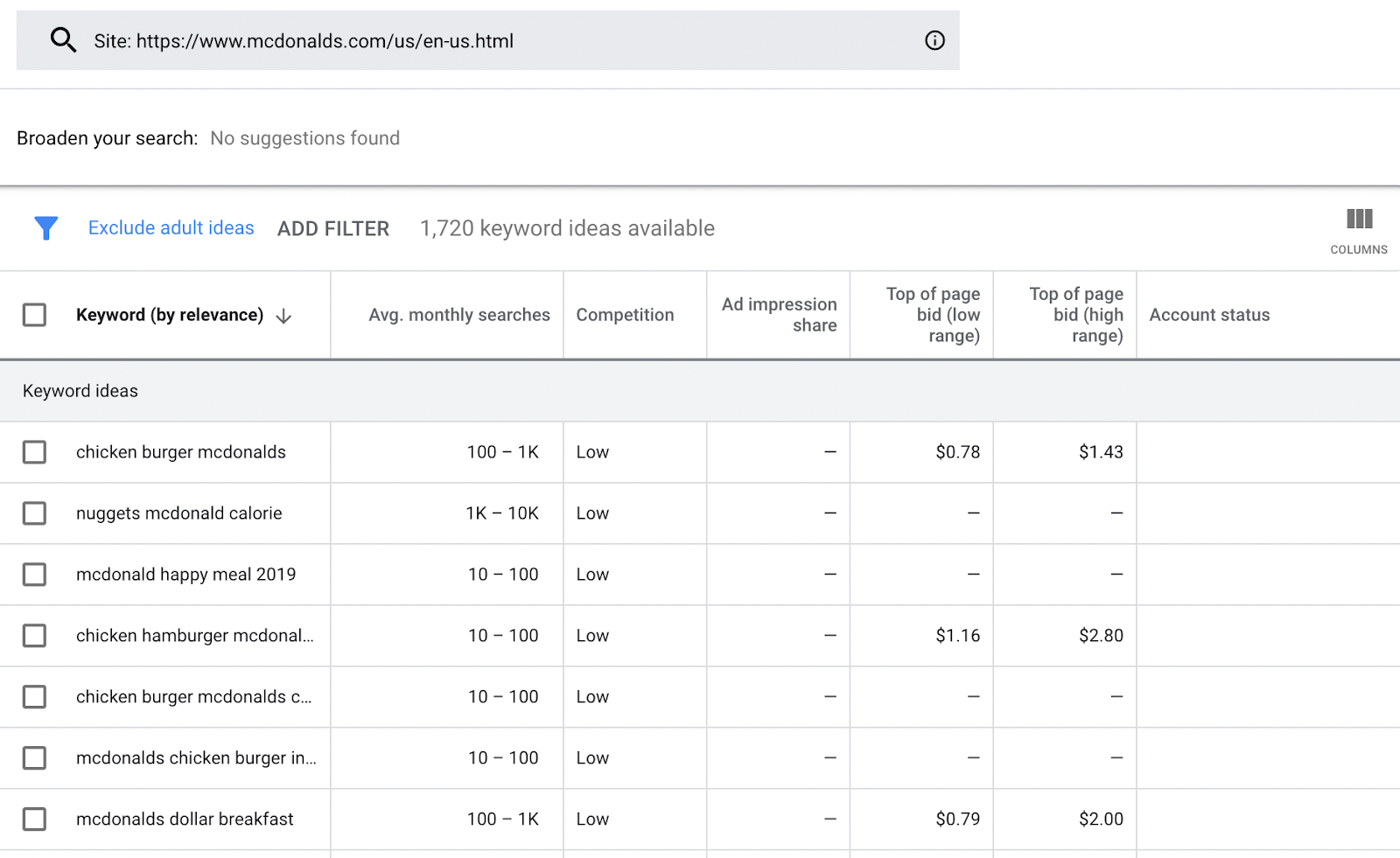
Take a look at the first keyword idea listed, “chicken burger mcdonalds.”
Its average of 100 to 1,000 monthly searches and competition for the keyword is qualified as “low.”
Note: When referencing ‘competition’ within Google Ads, it is important to note is that competition in Google Keyword Planner refers to the advertisers bidding on a particular keyword, not its organic competition.
However, Google Keyword Planner provides a lot of great ideas for your paid keywords and for building out your larger keyword strategy, too.
Google Search Console
Google Search Console is another free tool and generally useful for tracking your website’s performance in terms of organic search engine traffic.
You can use it to find new keywords and get data on keywords you’re ranking for, allowing you to determine their utility.
To get started, visit the Google Search Console page and click the blue “Start now” button and you can enter your domain.
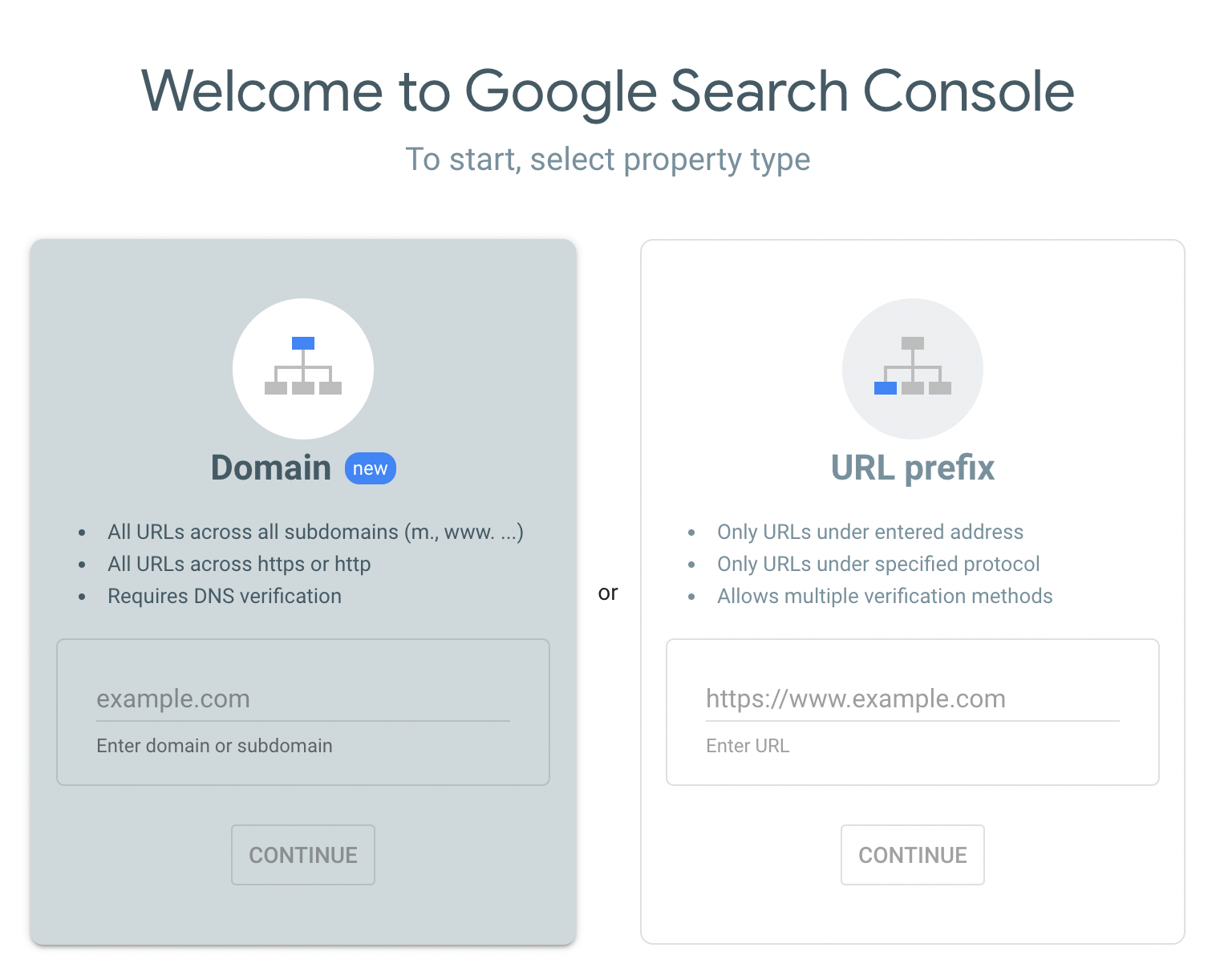
You’ll have to verify that you own that domain using DNS verification or by uploading an HTML file to your website.
Alternatively, you can add an HTML tag to your site or use your Google Analytics or Google Tag Manager account. Once you’re in the system, you’ll see your dashboard.

To see how your keywords are performing, download your search results report. To find new keywords, sort the report’s click-through rate (CTR) from low to high. This will show you unexpected keywords that you rank for but don’t actively target.
Keywords with many impressions and a low CTR may be worth targeting (for example, by building a new page of content around that keyword).
Keyword Sheeter
Keyword Sheeter is another free keyword tool that takes a different approach. In this case, the data is taken from thousands of Google autocomplete suggestions.
To use this tool, enter the keywords you’re interested in (one per line) and click “Sheet keywords.” Here’s an example:

You will then get a list of ideas.
You can easily export the given data via the “Export data” button at the bottom of the screen. Scroll down, and you’ll also get a detailed keyword table.
If you want more comprehensive information, you can pay for a report.
Different report options are available, including:
“Search Volume + CPC Priority Queue” “Google Organic Difficulty Report” “Top 100 Google SERP queue”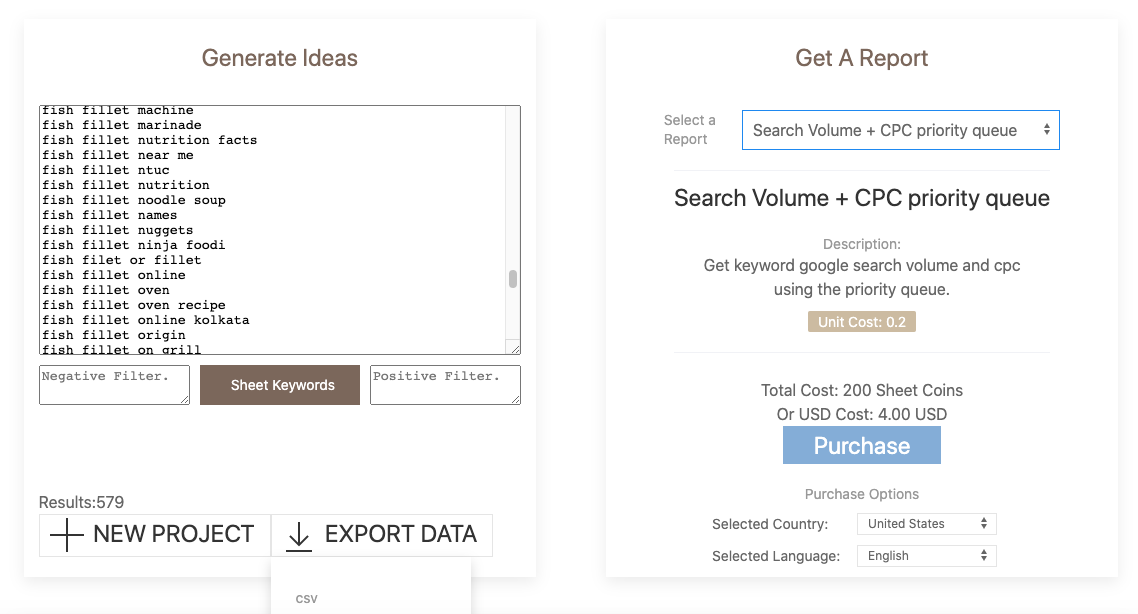
Semrush Topic Research Tool
You can use the Topic Research Tool to generate content ideas based on high-performing content online.
You can:
Search existing domains for content ideas View current trending headlines and questions based on your query See related searches without leaving the tool Organize results in a variety of ways, including as a mind mapHere’s a step-by-step breakdown of what happens when you enter the keyword “donut.”
The default view for results is “Cards,” but you can also view them in several formats (Explorer, Overview, and Mind Map).
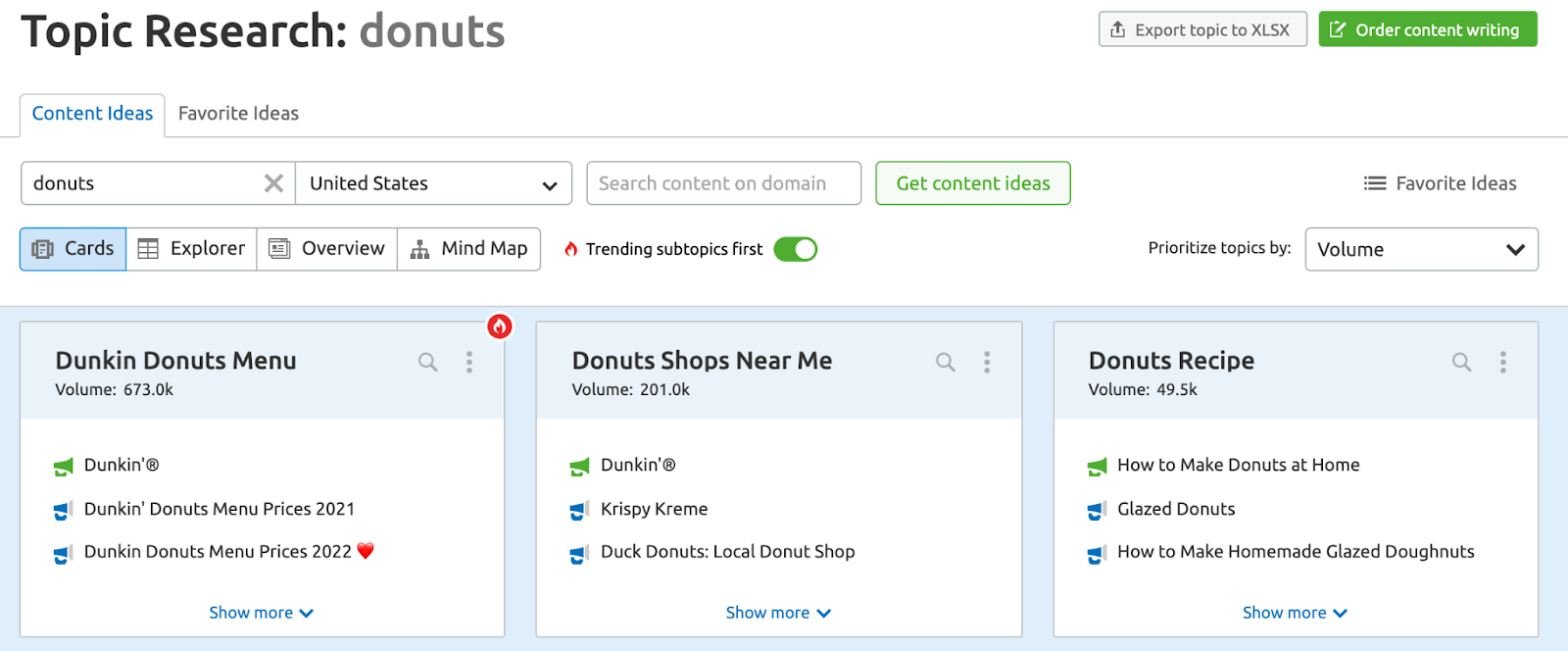
The Overview section is helpful if you’re feeling stuck. You can view the following:
Top ten headlines by backlinks Ten interesting questions Top subtopics Related searches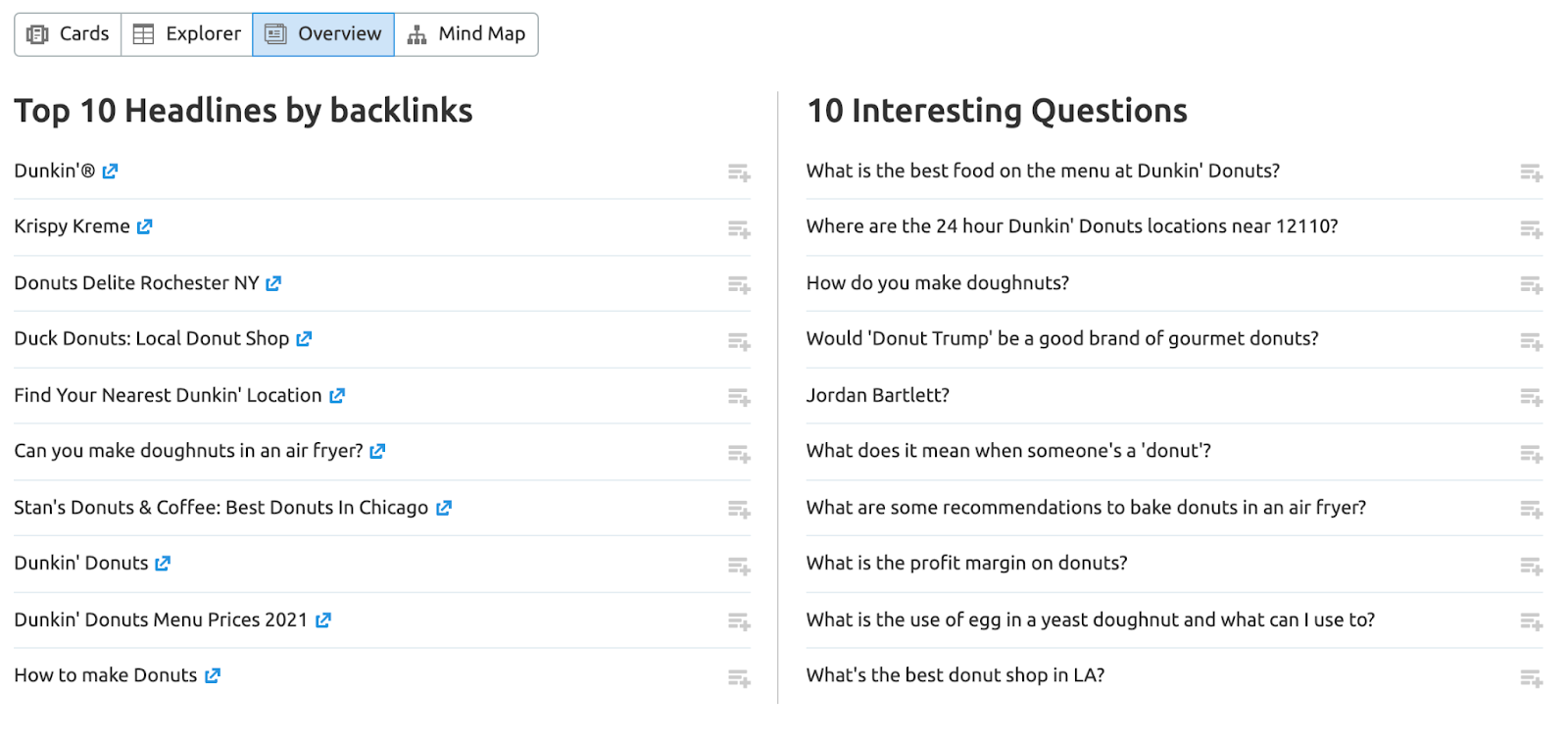
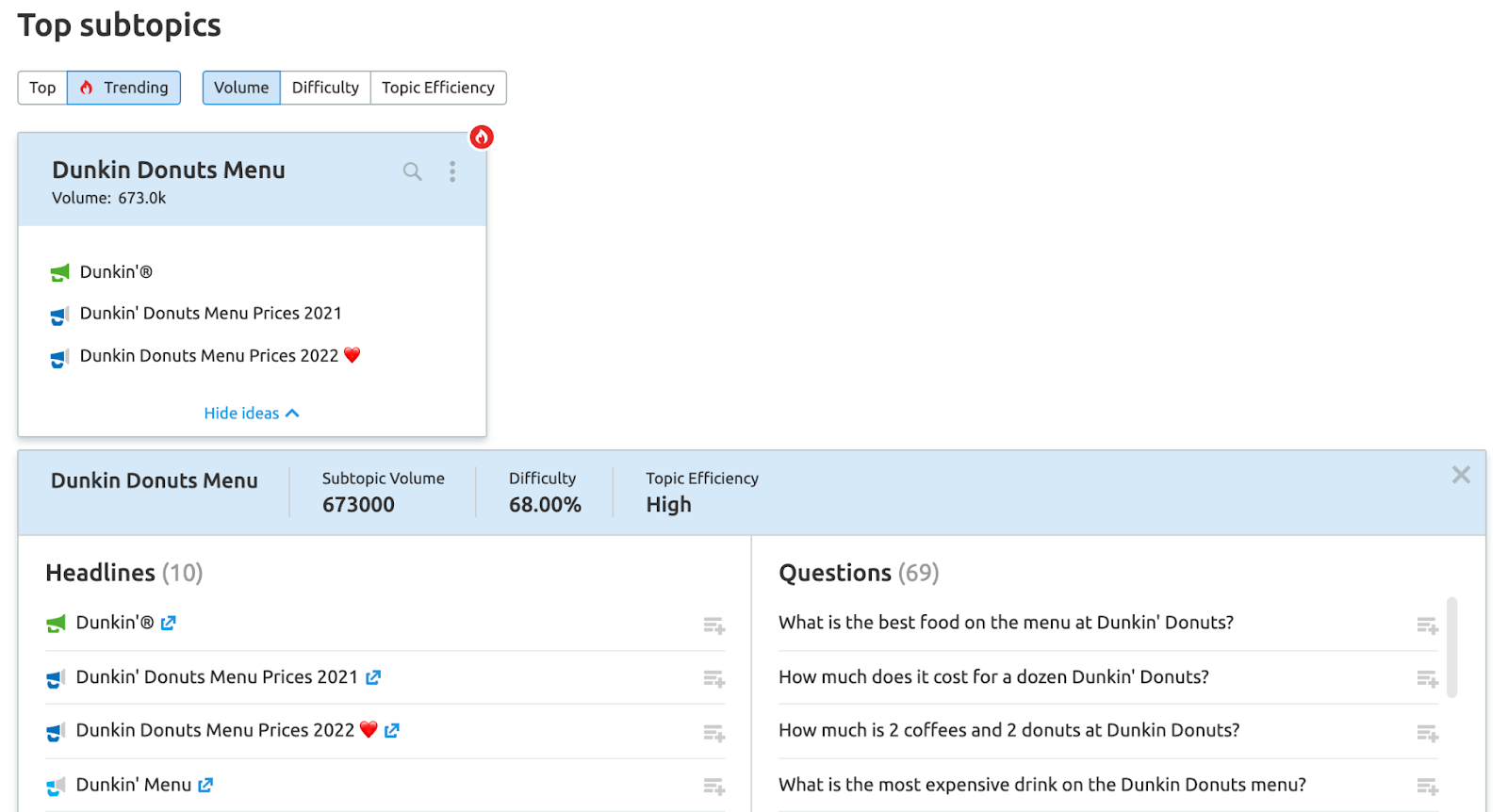
You can “favorite” ideas as you go and view them later in the Favorite Ideas tab.
Once you finish your research, you can export the information on your query or order content writing from Marketplace based on your search.
This tool is a part of the Content Marketing Platform, so you’ll need either a Guru or a Business account to access it. With either of those paid account types, you can research unlimited topics.
How to Find Local Search Volume
Now that we’ve covered how to find keywords and their search volume let’s discuss doing so on the local level.
There are a few different avenues you can take for local keyword research.
If you are using Semrush exclusively to conduct your keyword research on a local level, you can do this using the PPC Keyword tool or the Position tracking tool. To use either tool, you’ll need to start a brand new campaign in Semrush using a domain.
You can also use Google Ads Keyword Planner, which is free.
Below are more details on using each tool to find local search volume.
Position Tracking
If you’re setting up your campaign with Position Tracking, you have the option to type in the zip code or specific location to start tracking it on a national, regional, or local level.
To isolate keywords on a local level, enter the city you want to target and ensure the drop-down says “local.”
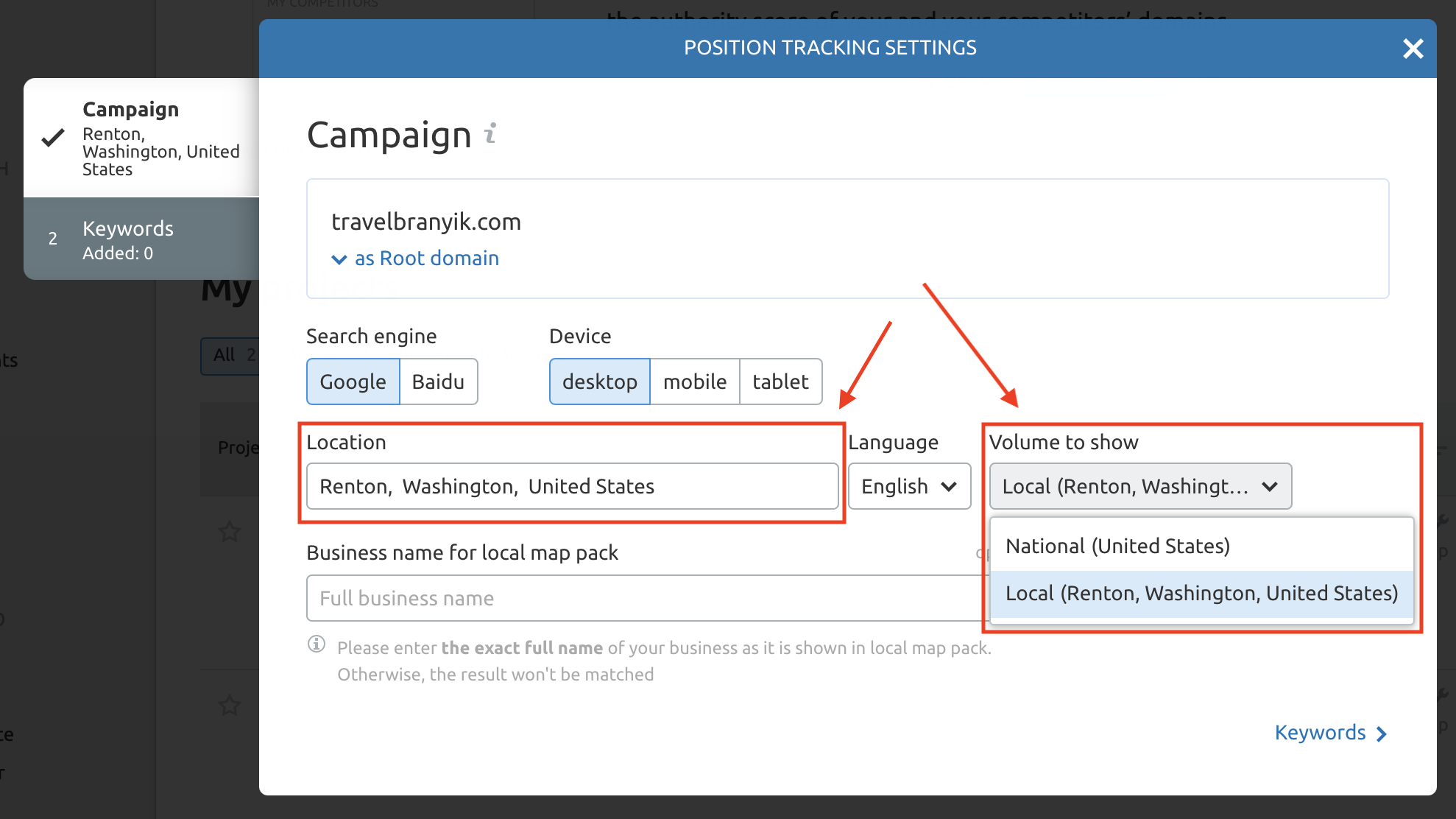
Once you’ve selected your location, the next step is to add a list of keywords you are already ranking for or keywords you want to rank for so you can see their search volume on a local level.
PPC Keyword Tool
When choosing the PPC Keyword Tool, you’ll face a prompt that will ask you to add keywords. There will be three general ways you can do this:
Manually From Semrush By Import from CSV, XLSX, or TXT
Once you choose an import source, you can move on to the next step, where you’ll confirm the keywords you want to add.
From there, you’ll be able to narrow down to a location by the city. After you complete the setup, you'll see the keywords you entered and their local search volume metrics.
Google Ads Keyword Planner
If you aren’t currently utilizing Semrush to conduct your local keyword research, another way you can discover local search volume for keywords is through Google Ads Keyword Planner.
Once you are in your Google Ads account, navigate to the top right of your screen to “Tools and Settings” and select “Keyword Planner” in the drop-down.
Type in the keywords you want to search for. Then, right beneath it, click on the location that it’s currently set to—in the case, it says the “United States.”
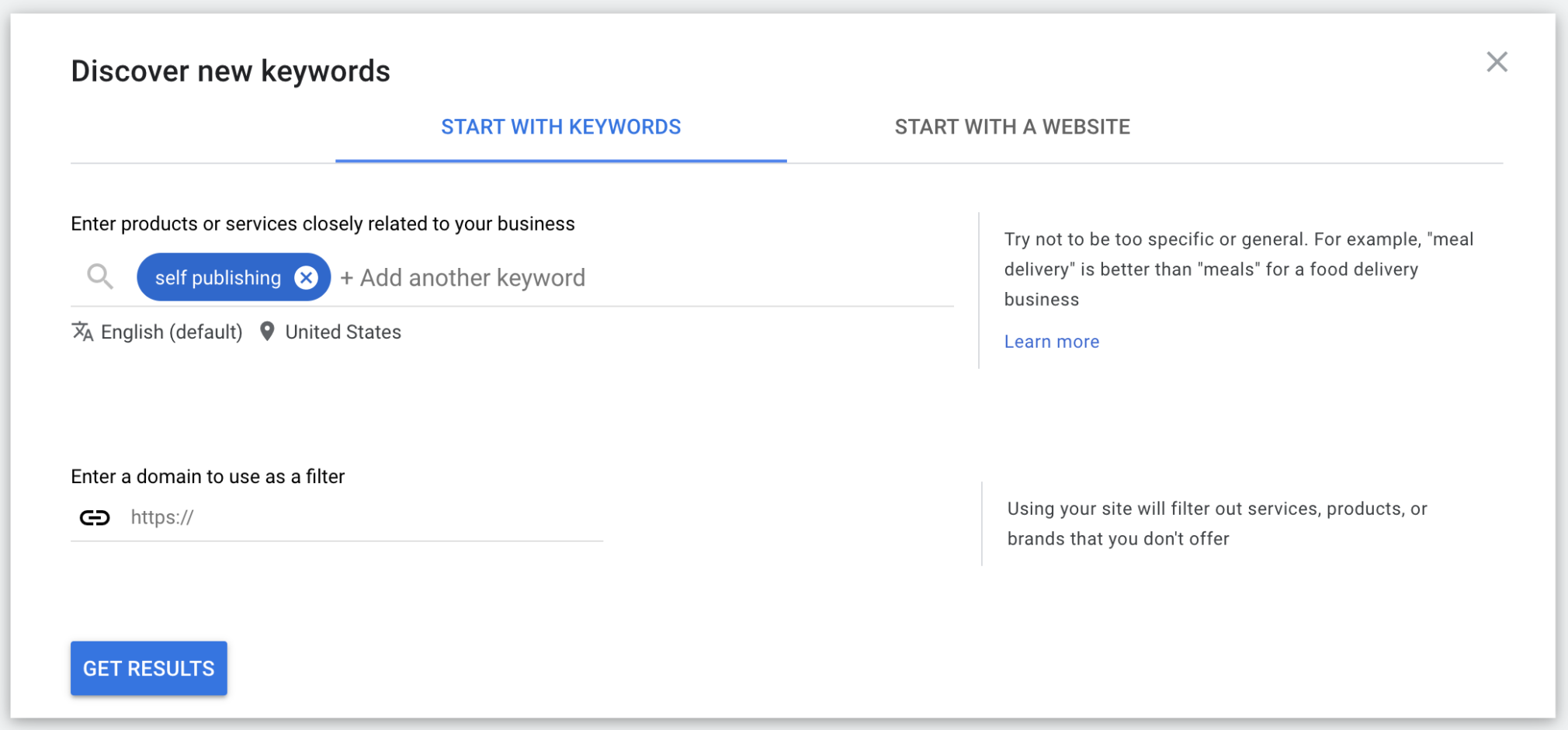
From there, you can choose the city you want to target and see how large the search volume is compared to other locations.
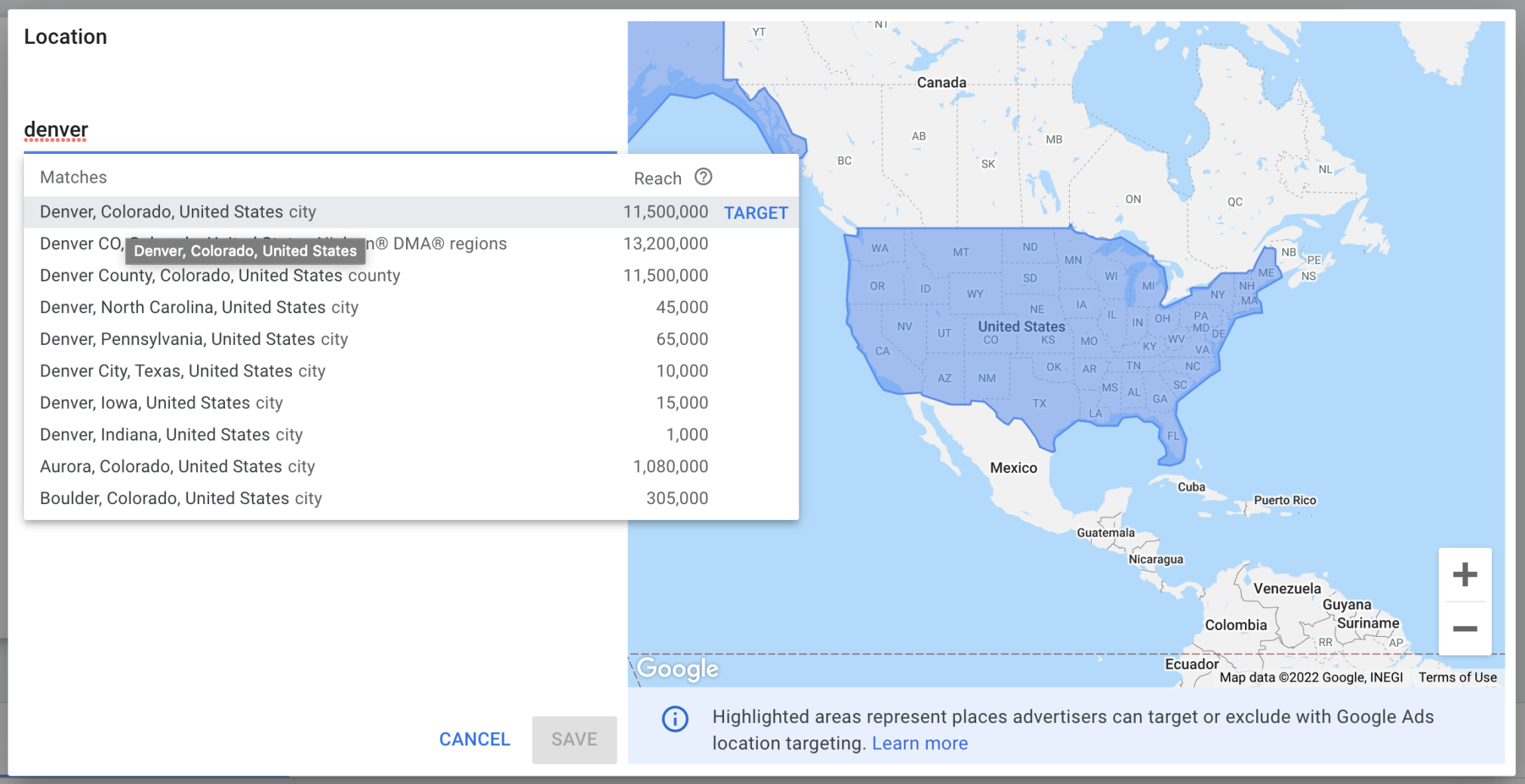
Be sure to save your settings, and then click on “Get Results” to see average monthly local searches for that specific location.
How to Monitor Page Performance
Keep in mind that keyword search volume isn’t the same as clicks. Just because people are searching for a particular word doesn’t mean they’re clicking on results related to that word.
How can you tell if your keyword search and implementation are succeeding?
To keep a better eye on how your pages are getting traffic and clicks, you’ll need a good monitoring tool.
This is where the Position Tracking tool can come in handy.
You can monitor things like:
Your Rankings and Ranking Distribution Each page’s estimated traffic How you compare with your competitors Where you’re ranking based on device and location Whether or not you appear in SERP featuresWith the Position Tracking Tool, you can track any keyword.
While Google search volume isn’t a foolproof predictor of search traffic, it’s still critical to inform data-driven keyword research and successful PPC bidding strategies for digital marketing.
Get More Insights Into Your SEO
Now that you’re familiar with keyword search volume, determining good keyword search volume, finding proper keywords, and using helpful keyword tools, you're ready to do your research!
We know there are many SEO tools to utilize when investigating keyword search volume. To make it easier, here are some of our favorites to help you feel equipped for keyword research:
Keyword Magic Tool Keyword Overview Position Tracking Tool Keyword Gap Organic ResearchYour SEO doesn’t need to be a guessing game. Data and tools like these help guide you in your keyword choices so take advantage of them.
And last but not least, don’t forget to revisit your keywords as time goes on.
Search engine algorithms are constantly evolving, and the SEO landscape is always changing. You can’t just research keywords once and never revisit the topic. So our best advice is to check back regularly to ensure that your given keywords are still performing adequately.
Innovative SEO services
SEO is a patience game; no secret there. We`ll work with you to develop a Search strategy focused on producing increased traffic rankings in as early as 3-months.
A proven Allinclusive. SEO services for measuring, executing, and optimizing for Search Engine success. We say what we do and do what we say.
Our company as Semrush Agency Partner has designed a search engine optimization service that is both ethical and result-driven. We use the latest tools, strategies, and trends to help you move up in the search engines for the right keywords to get noticed by the right audience.
Today, you can schedule a Discovery call with us about your company needs.
Source:





![How to Find Low-Competition Keywords with Semrush [Super Easy]](https://allinclusive.agency/uploads/images/how-to-find-low-competition-keywords-with-semrush-super-easy.svg)